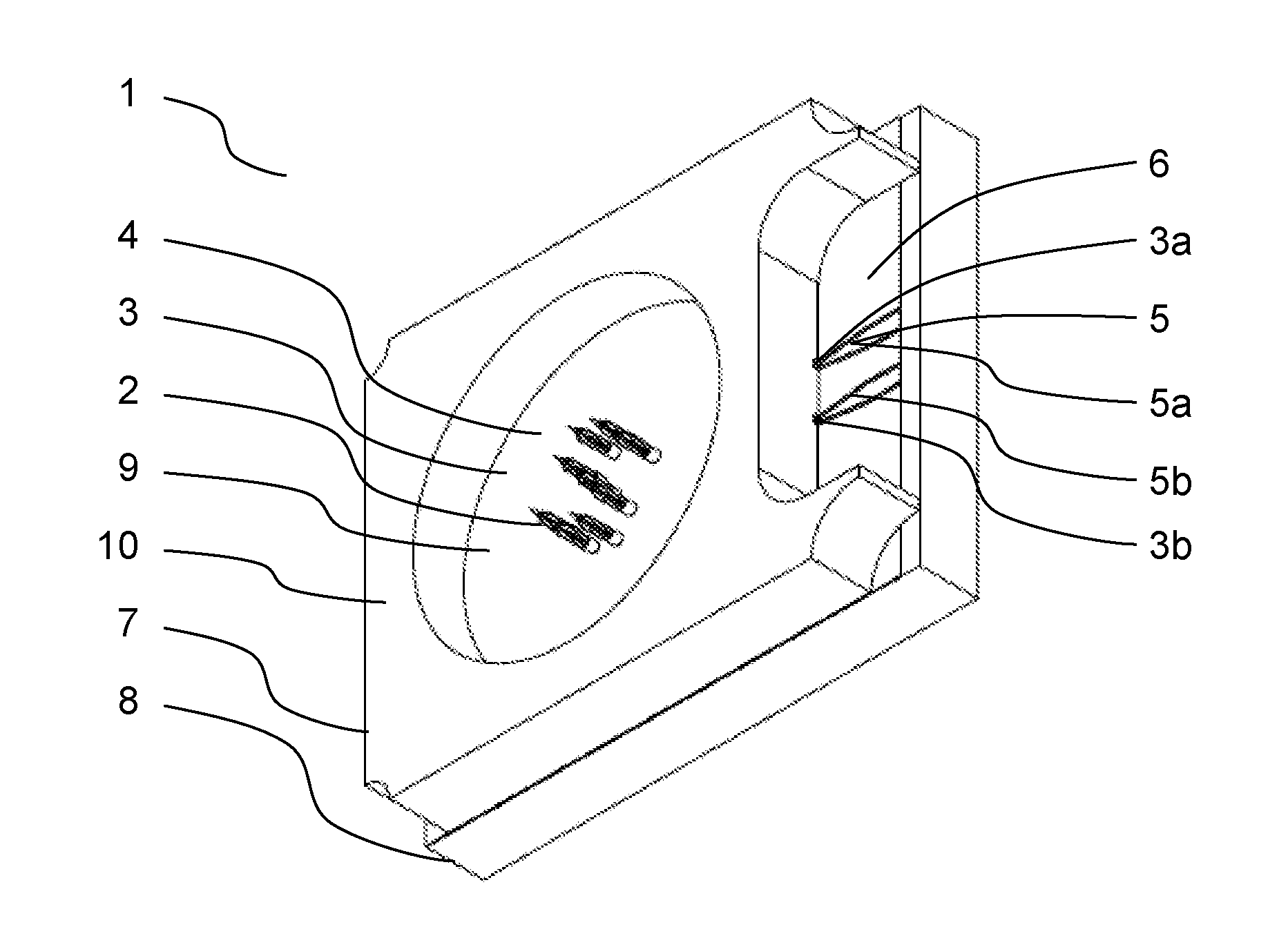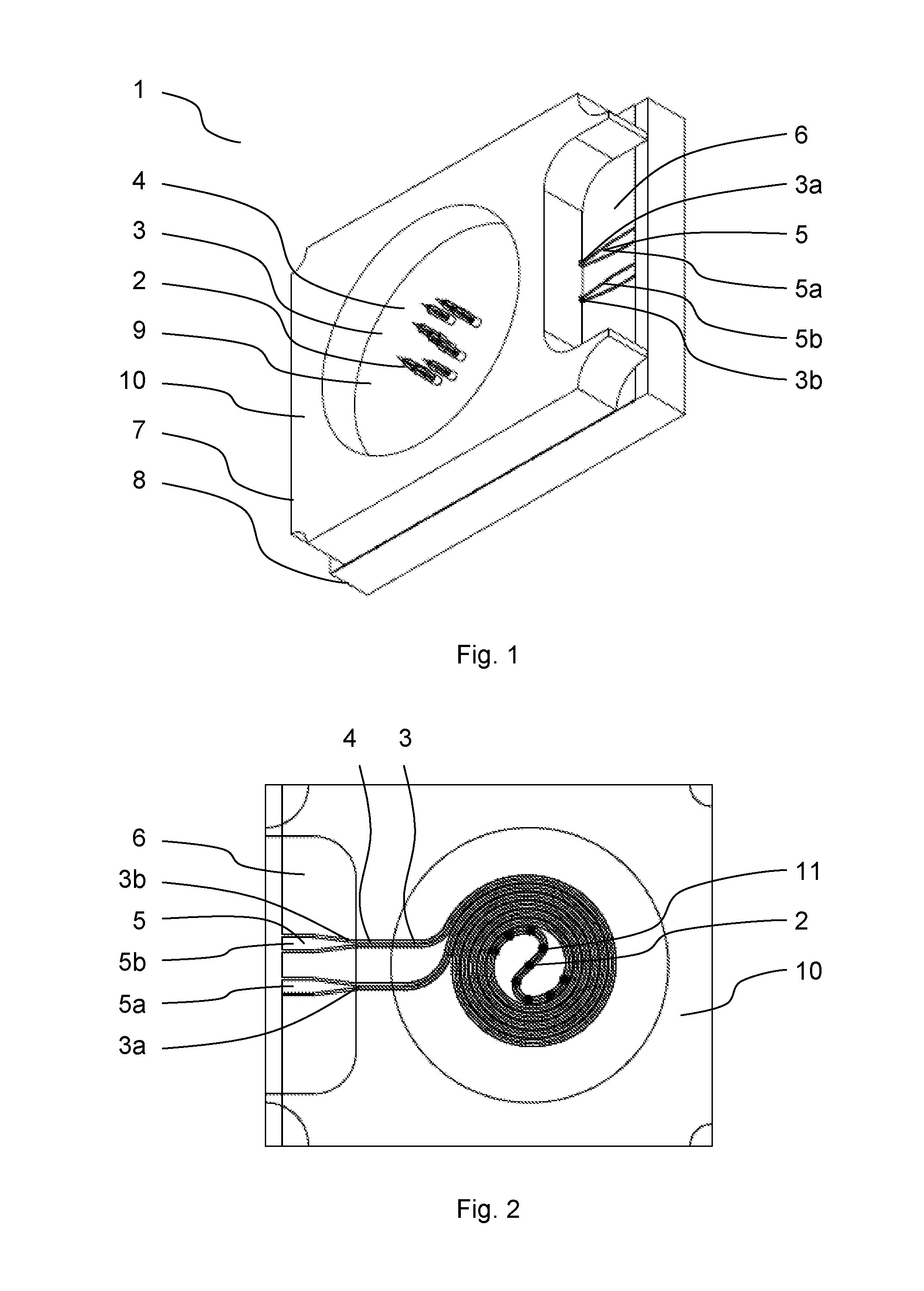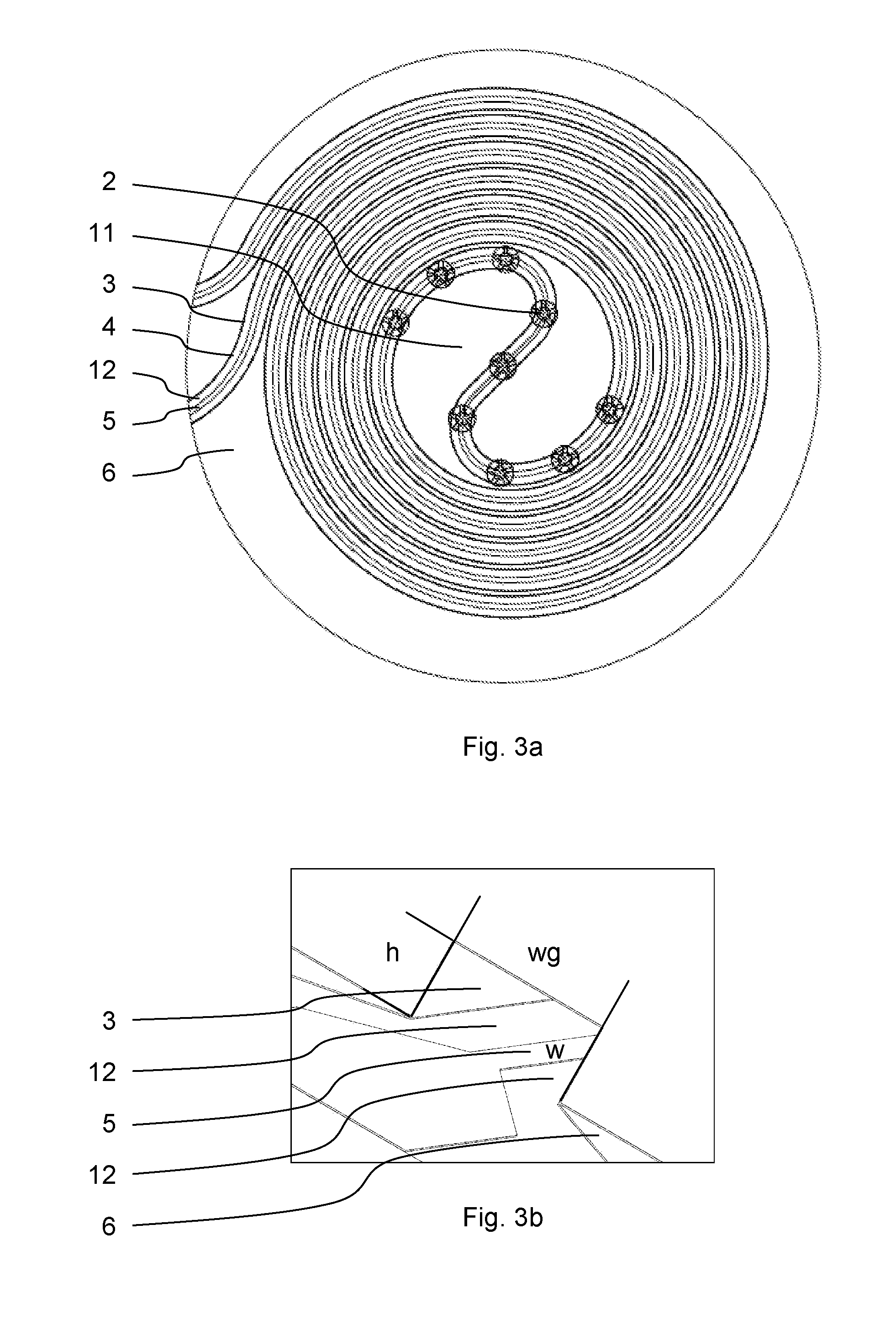A mocrofabricated sensor and a method of sensing the level of a component in bodily fluid
a sensor and bodily fluid technology, applied in the field of microfabricated sensors and a method of sensing the level of a component in bodily fluid, can solve the problems of pain from the extraction of blood using the lancet as well as skin damage, and the failure of techniques primarily, and achieve the effect of rapid and accurate detection of a componen
- Summary
- Abstract
- Description
- Claims
- Application Information
AI Technical Summary
Benefits of technology
Problems solved by technology
Method used
Image
Examples
Embodiment Construction
[0069]In FIGS. 1 and 2, a microfabricated sensor 1 is shown comprising a plurality of hollow microneedles 2 for minimal invasive extraction of a sample of bodily fluid. The microneedles each comprises a single capillary bore, and the sensor further comprises a fluid channel 3 (not visible in FIG. 1, see e.g. FIG. 2) connected to the microneedles for receiving a sample of bodily fluid extracted by the microneedles. The fluid channel is open to the ambient through a first 3a and a second 3b fluid channel opening to enable capillary suction of the bodily fluid. The term minimally invasive implies that there is minimal damage to biological tissues at the point of entrance of the microneedles, thus reducing the discomfort of the patient.
[0070]The sensor further comprises a microwave transmission line 4 (not visible in FIG. 1, see e.g. FIG. 2) coupled to and extending along at least a portion of the fluid channel, such that the dielectric properties of the fluid in the channel provide an ...
PUM
 Login to View More
Login to View More Abstract
Description
Claims
Application Information
 Login to View More
Login to View More - R&D
- Intellectual Property
- Life Sciences
- Materials
- Tech Scout
- Unparalleled Data Quality
- Higher Quality Content
- 60% Fewer Hallucinations
Browse by: Latest US Patents, China's latest patents, Technical Efficacy Thesaurus, Application Domain, Technology Topic, Popular Technical Reports.
© 2025 PatSnap. All rights reserved.Legal|Privacy policy|Modern Slavery Act Transparency Statement|Sitemap|About US| Contact US: help@patsnap.com



